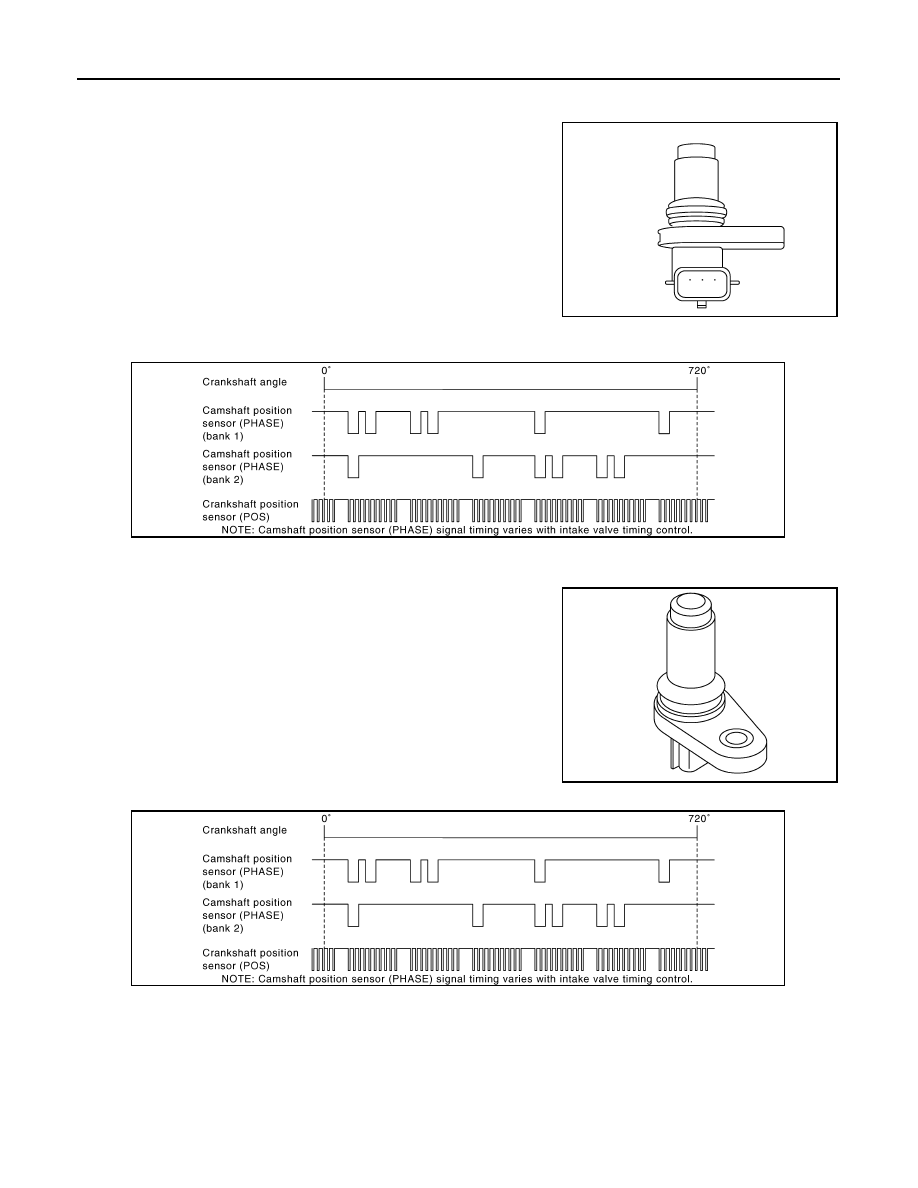Nissan Quest E52. Manual - part 453

EC-22
< SYSTEM DESCRIPTION >
[VQ35DE]
COMPONENT PARTS
Camshaft Position Sensor (PHASE)
INFOID:0000000009650928
The camshaft position sensor (PHASE) senses the retraction of
intake camshaft to identify a particular cylinder. The camshaft posi-
tion sensor (PHASE) senses the piston position.
When the crankshaft position sensor (POS) system becomes inoper-
ative, the camshaft position sensor (PHASE) provides various con-
trols of engine parts instead, utilizing timing of cylinder identification
signals.
The sensor consists of a permanent magnet and Hall IC.
When engine is running, the high and low parts of the teeth cause
the gap with the sensor to change.
The changing gap causes the magnetic field near the sensor to
change.
Due to the changing magnetic field, the voltage from the sensor changes.
ECM receives the signals as shown in the figure.
Crankshaft Position Sensor (POS)
INFOID:0000000009650929
The crankshaft position sensor (POS) is located on the oil pan facing
the gear teeth (cogs) of the signal plate. It detects the fluctuation of
the engine revolution.
The sensor consists of a permanent magnet and Hall IC.
When the engine is running, the high and low parts of the teeth
cause the gap with the sensor to change.
The changing gap causes the magnetic field near the sensor to
change.
Due to the changing magnetic field, the voltage from the sensor
changes.
The ECM receives the voltage signal and detects the fluctuation of
the engine revolution.
ECM receives the signals as shown in the figure.
JMBIA0064ZZ
JMBIA0001GB
JMBIA0062ZZ
JMBIA0001GB